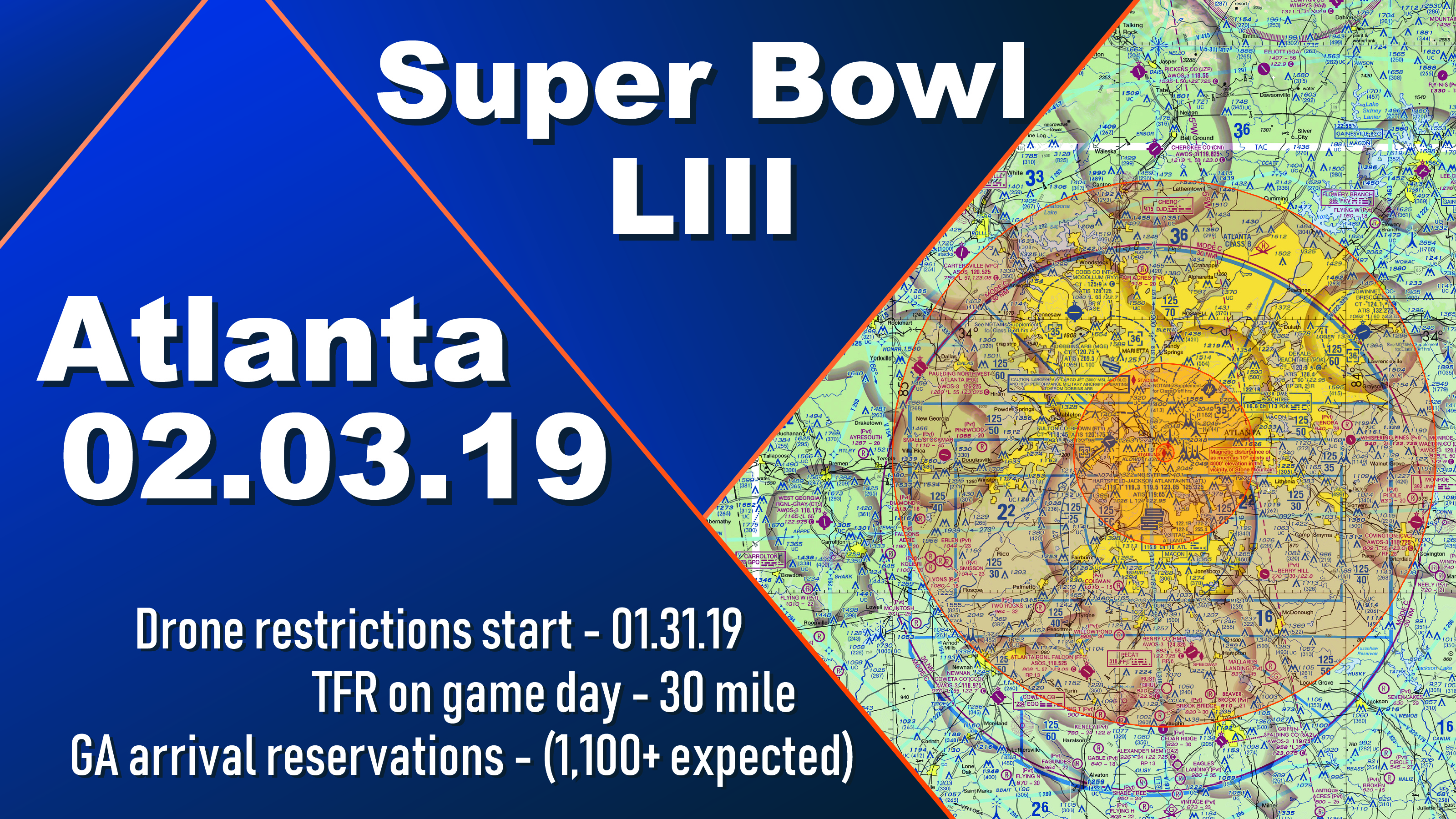Super Bowl airspace security will be tight
When the Los Angeles Rams and the New England Patriots take the field at Mercedes Benz Stadium for Super Bowl 53 in Atlanta on Feb. 3, football fans in the stands can rest easy knowing the airspace is secure thanks to multiple layers of preparation and surveillance.

Preparations included a Jan. 29 exercise over South Carolina with the Air National Guard’s 169th Fighter Wing and he Civil Air Patrol: F–16s intercepted a CAP Cessna 182 that simulated a rogue aircraft that had breached the Super Bowl temporary flight restriction. The drill was part of the North American Aerospace Defense Command’s routine training conducted throughout the United States. The practice demonstration marked the eighteenth year the all-volunteer U.S. Air Force Auxiliary has tested NORAD’s defense response.
Pilots and drone operators can do their part to avoid the airspace on game day.
The TFR will be in effect from 5:30 p.m. to 11:59 p.m. local time on Feb. 3. It will consist of a 10-nautical mile-radius inner core and a 10-nm to 30-nm outer ring, from the surface to 17,999 feet msl. Operations in the inner core are prohibited except for law enforcement and military aircraft, and other operations detailed in the notam. Operations within the outer ring are limited to aircraft arriving and departing local airports. Air traffic control may authorize transit operations, workload permitting. All aircraft must be on an active IFR or filed VFR flight plan with a discrete code assigned by ATC as detailed in the TFR text.
Unmanned aircraft are among operations prohibited within the TFR, as are model aircraft, model rocketry, flight training, practice instrument approaches, aerobatic flight, glider operations, parachuting, and other operations as described.
CBP said that unmanned aircraft “will not be allowed to operate anywhere within the TFR unless prior authorization has been granted by the FAA.”
The FAA will impose additional drone-specific flight restrictions starting Jan. 31 within one mile of the stadium.
The agency has posted additional information related to the event, including links to special air traffic procedures that will be in place for arrivals and departures from local airports as the area prepares for more than 1,100 additional general aviation aircraft that are expected to fly in.
AOPA encourages pilots to check notams frequently for changes to effective times or restricted airspace dimensions before operating in the vicinity.


